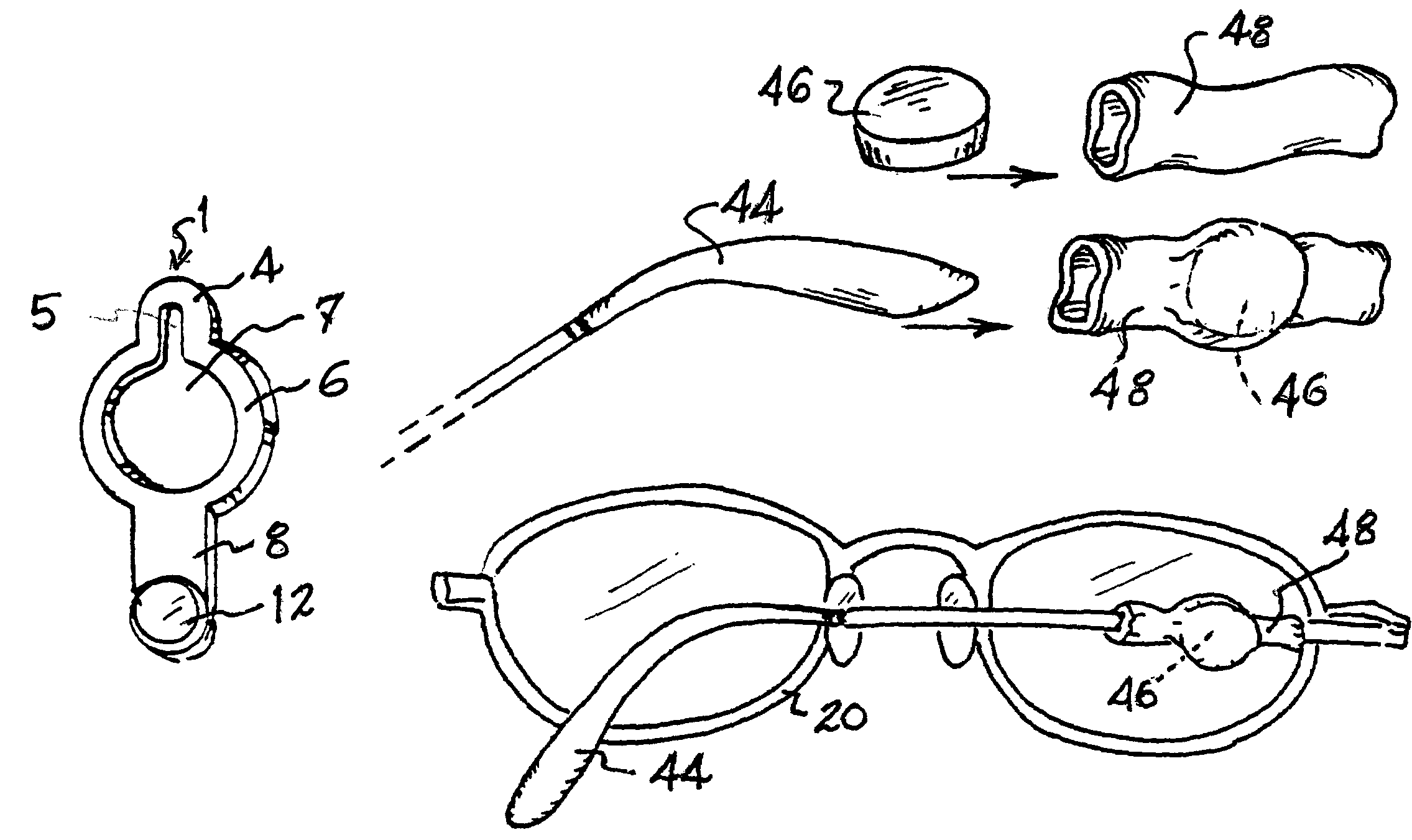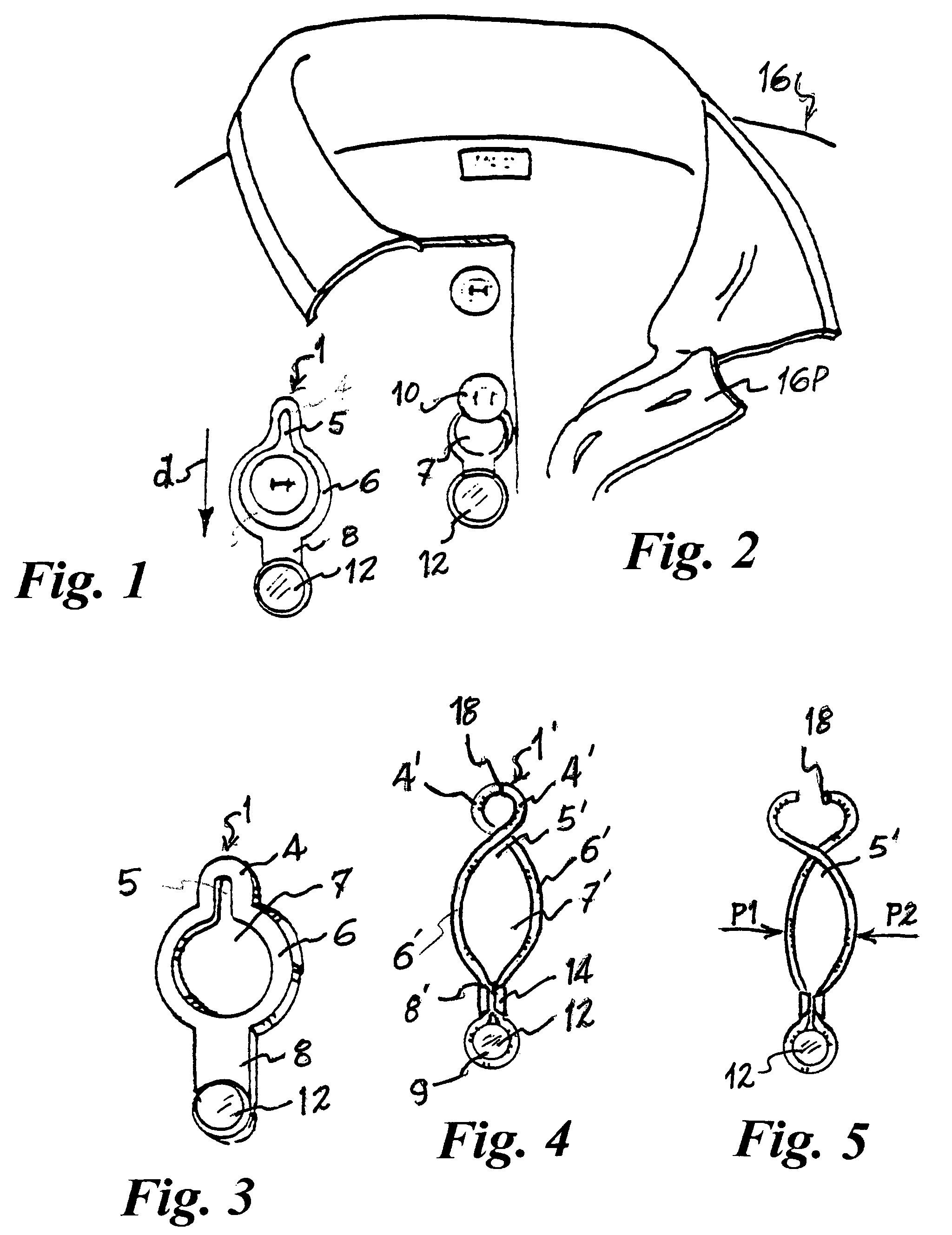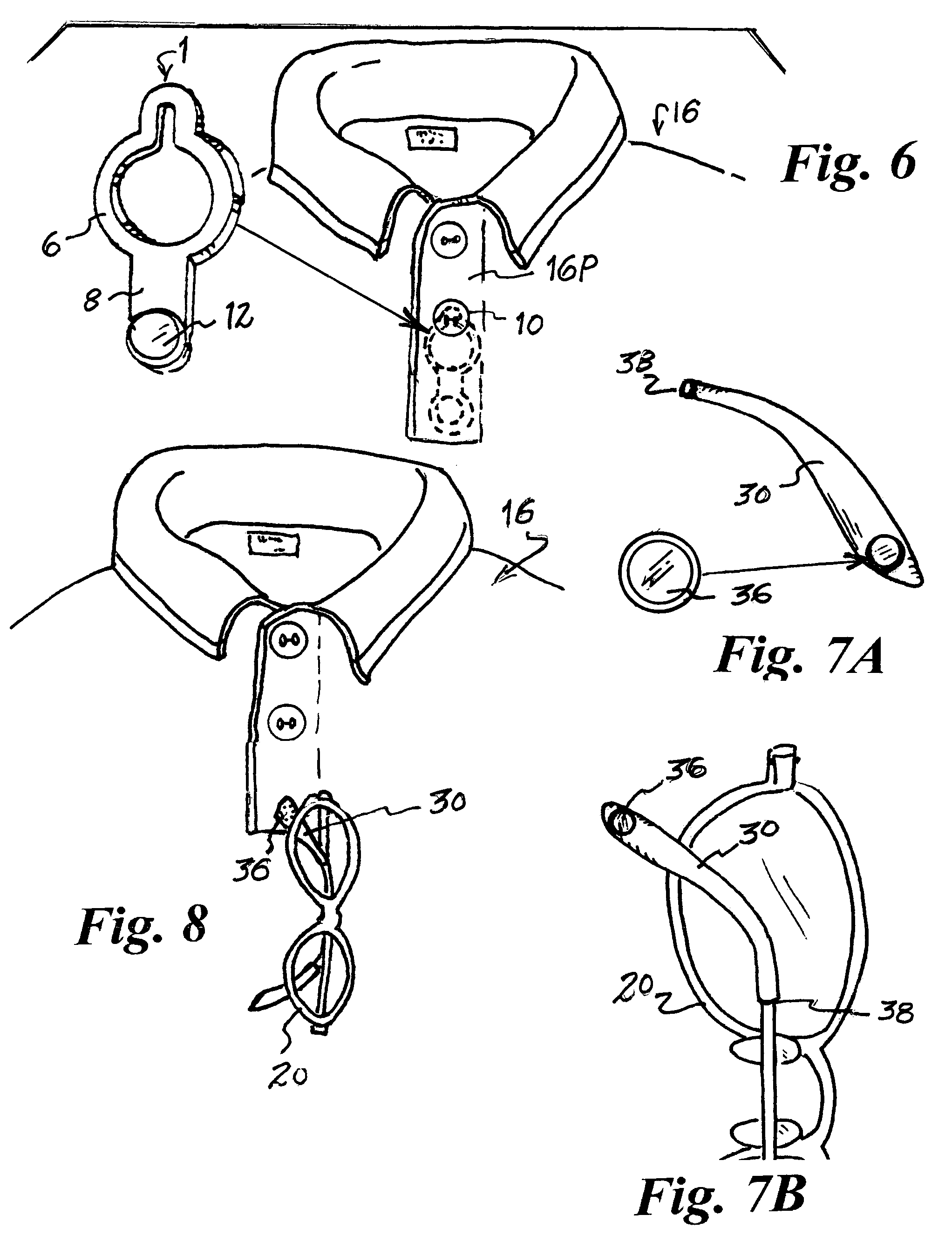Portable securement system for eyewear
a securement system and eyewear technology, applied in the field of implement supports and holders, can solve the problems of eyewear falling out, eyewear becoming scratched or bent, bulky and often heavier than the eyewear itself, and hinged cases that are fully closed for storage have been found to be less than satisfactory, so as to achieve non-invasive or damaging effects
- Summary
- Abstract
- Description
- Claims
- Application Information
AI Technical Summary
Benefits of technology
Problems solved by technology
Method used
Image
Examples
first embodiment
[0063]FIG. 1 shows a portable securement system docking device 1 in the form of a pendant construction. Docking device 1 includes a first or upper part 4 having sides 6, and a lower part 8. This device 1 may be molded, machined, stamped or otherwise manufactured of any suitable material (metal, plastic, natural substance, and the like or a combination thereof).
[0064]The sides 6 are fabricated or shaped so as to define a generally central loop or opening 7 of a predetermined dimension adequately sized to accommodate being placed over a typical garment button 10 as viewed in FIG. 2. Typical garment buttons may range in size from around one-fourth inch up to as much as one inch in diameter; however, most are in the range of three-eight inch to one-half inch in diameter.
[0065]A first or upper part 4 of said docking device 1, as more clearly demonstrated by FIG. 3, is fabricated or shaped so as to define a first or upper opening 5 as an upward extension of opening 7 and characterized as ...
second embodiment
[0070]When called upon, an easy tug on the docked eyewear will remove it from securement. When wearing the sleeve-equipped eyewear the added appliance will go unnoticed especially if it is at a location behind the ear. And, unlike so many prior art devices, no damages are imparted to the fabric and magnetic securement elements are not misplaced loosely within the garment. Next to be described is a similarly functioning alternative or second embodiment of the present invention.
[0071]Depicted in FIGS. 4 and 5 and FIGS. 9-11 is the second embodiment of portable securement system docking device also of a pendant construction. Portable securement system device 1′ may be fabricated from a durable material that is spring-like (i.e., the material can be flexed or bent, yet possesses mechanical memory when deformed so as to recover its pre-flexed shape and position). For example, device 1′ may be formed of a single, finite segment of metal wire with a pair of ends 18 opposed at a gap therebe...
PUM
 Login to View More
Login to View More Abstract
Description
Claims
Application Information
 Login to View More
Login to View More - R&D
- Intellectual Property
- Life Sciences
- Materials
- Tech Scout
- Unparalleled Data Quality
- Higher Quality Content
- 60% Fewer Hallucinations
Browse by: Latest US Patents, China's latest patents, Technical Efficacy Thesaurus, Application Domain, Technology Topic, Popular Technical Reports.
© 2025 PatSnap. All rights reserved.Legal|Privacy policy|Modern Slavery Act Transparency Statement|Sitemap|About US| Contact US: help@patsnap.com



